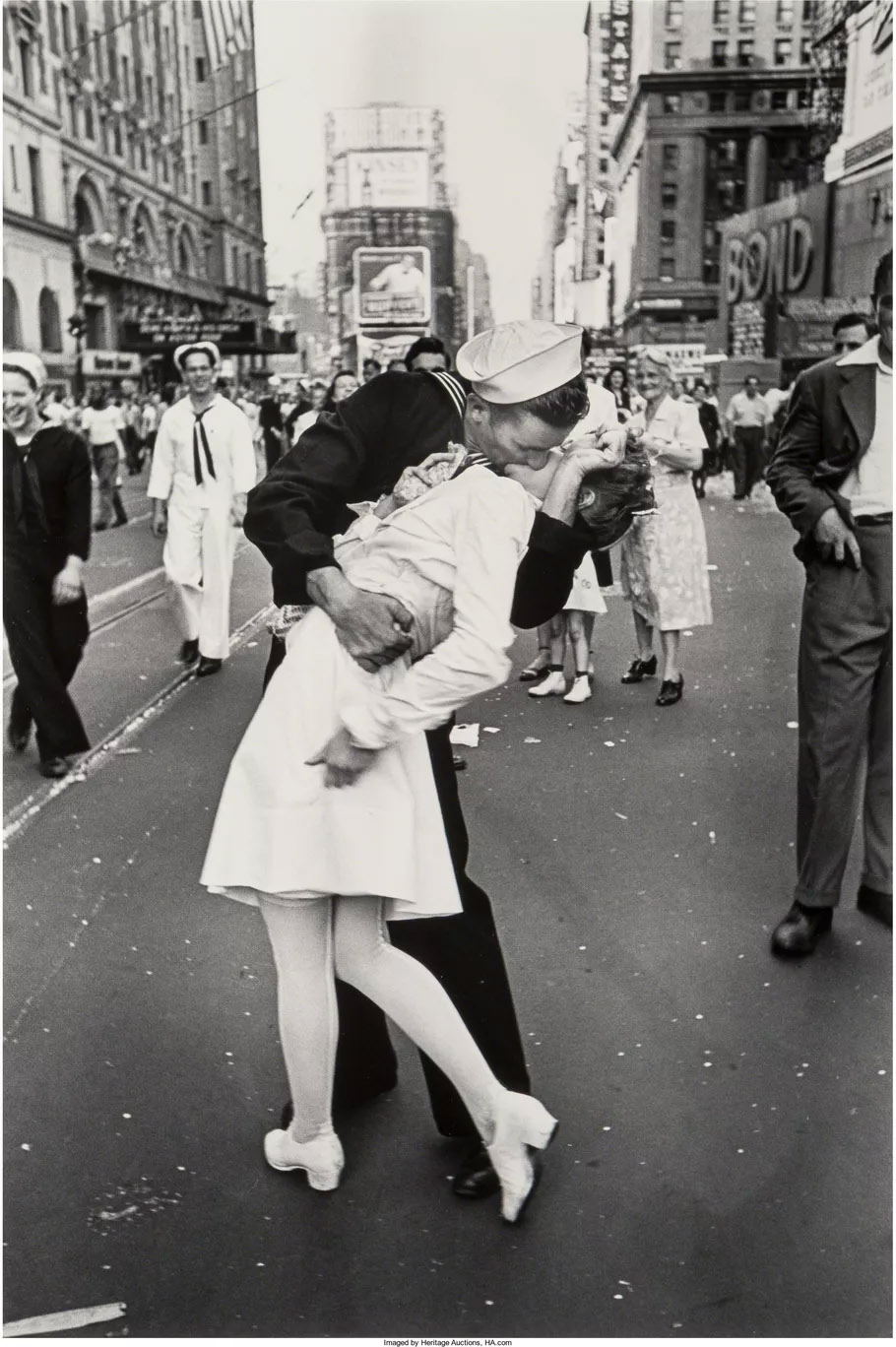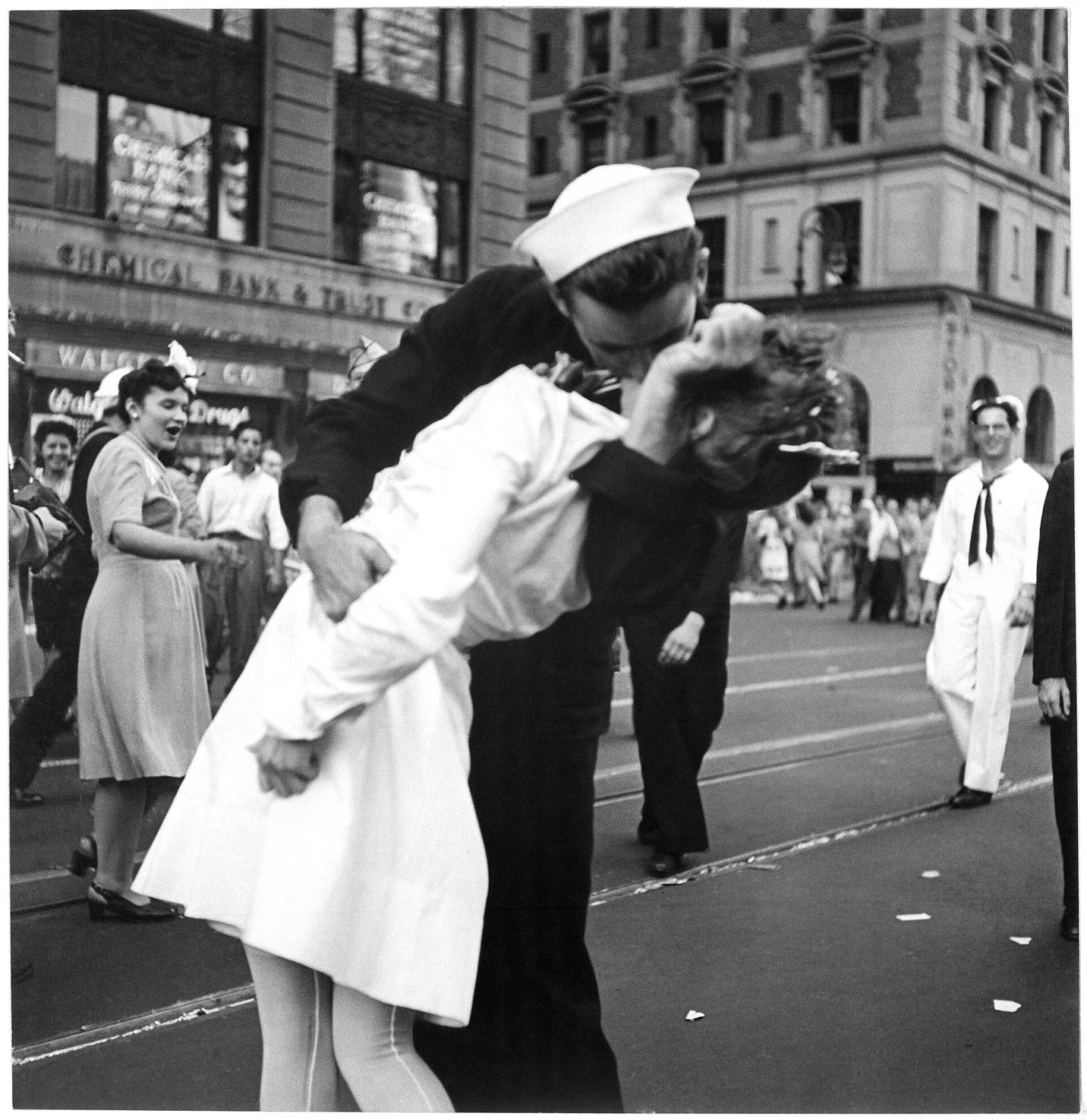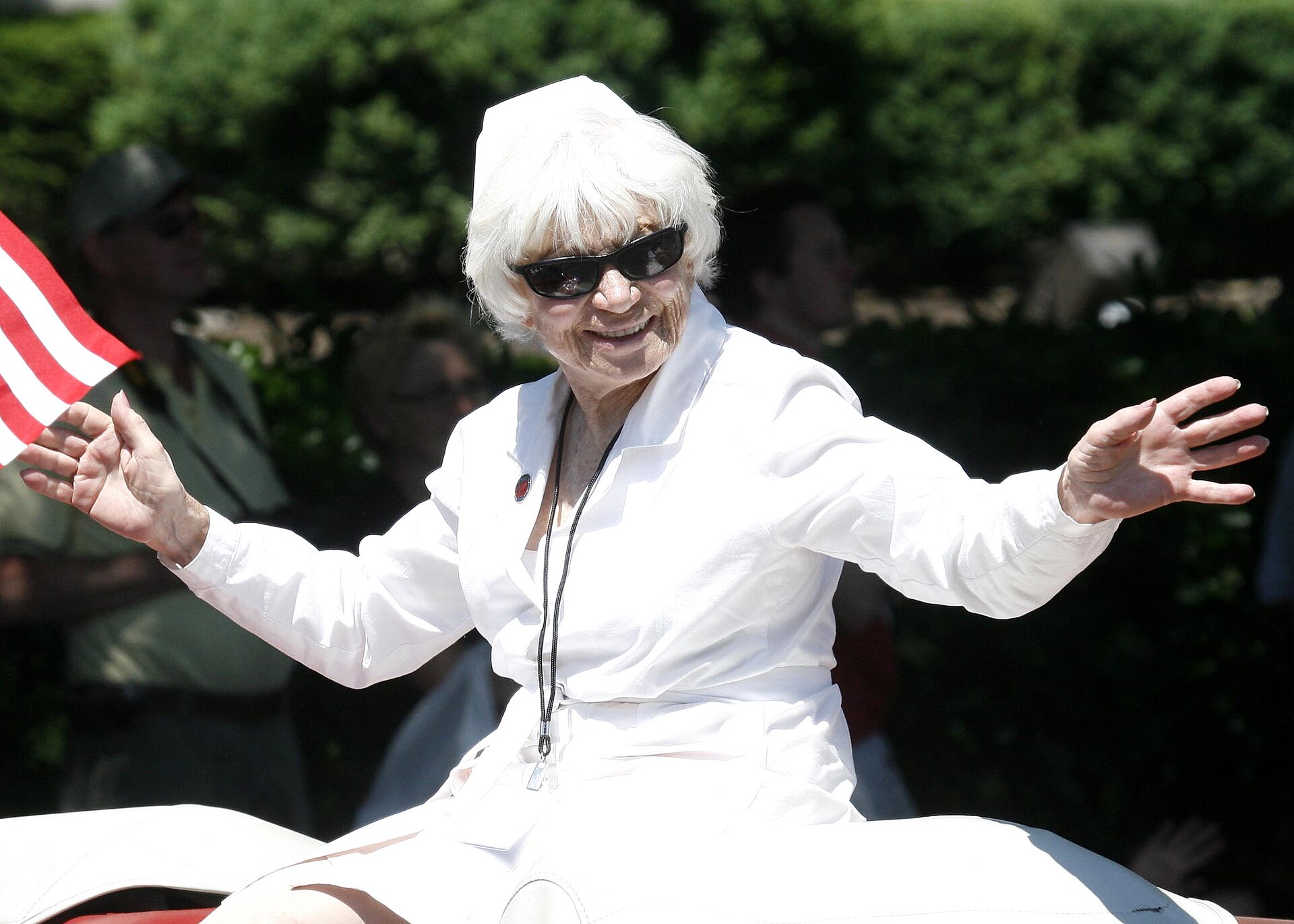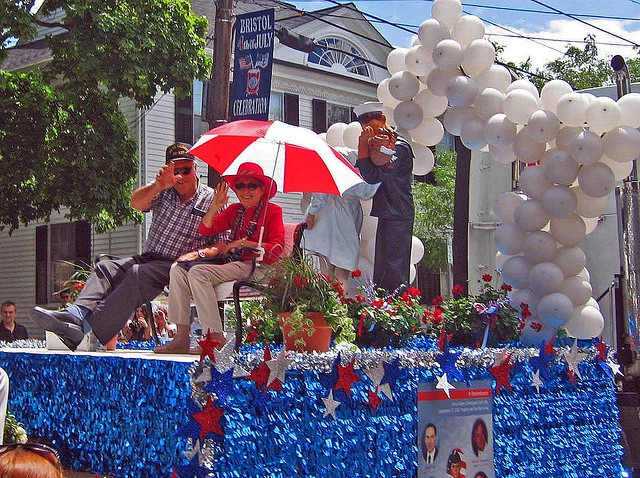It is the most famous photograph showing the end of World War II in the United States – an image of a US Navy sailor embracing and kissing a young woman in Times Square on 14 August 1945. Taken by Life photographer Alfred Eisenstaedt, “The Kissing Sailor”, as it has become known, has been reprinted countless times. But who exactly were the sailor and the woman recorded at the moment when the world erupted in joy after the death of over 400,000 Americans and at least fifty million people around the globe?

The great Alfred Eisenstaedt said he was too busy recording scenes in Times Square that heady August afternoon to stop either the woman or the sailor and jot down their names. Further compounding the mystery was the fact that Eisenstaedt’s photograph did not show their faces. “In Times Square on V.J. Day,” he recalled, “I saw a sailor running along the street grabbing any and every girl in sight. Whether she was a grandmother, stout, thin, or old, didn't make a difference. Suddenly, in a flash, I saw something white being grabbed. I turned around and clicked the moment the sailor kissed the nurse. If she had been dressed in a dark dress, I would never have taken the picture. If the sailor had worn a white uniform, the same… People tell me that when I am in heaven, they will remember this picture.”
Eisenstaedt was not the only photographer in Times Square that afternoon. US Navy photographer Victor Jorgensen was also there and, remarkably, snapped the same couple from a closer angle. His image, often mistaken for Eisenstaedt’s, appeared first in the New York Times on August 15. Because the image is in the public domain, unlike Eisenstaedt’s, it has been seen and used many more times. It shows exactly where the famous kiss took place: in front of the Chemical Bank and Trust building.

After Eisenstaedt’s image was published, Life magazine asked the subjects of the picture to identify themselves. There were no volunteers. Decades passed. Then, in 1980, Eisenstaedt was asked to send a copy of his image to a woman who claimed to be in the photograph. Edith Shain was not officially identified, but that didn’t stop her from attending public celebrations and commemorations and even being photographed with men who said they had grabbed her and kissed her in Times Square.
Life magazine later asked the man to identify himself, and several men claimed to be the sailor. Other women also came forward, saying they were the nurse. Over the years, the list of men claiming to be the sailor grew longer: Donald Bonsack, John Edmonson, Wallace C. Fowler, Clarence “Bud” Harding, Walker Irving, James Kearney, Marvin Kingsburg, Arthur Leask, Jack Russell, Bill Swicegood, and George Mendonsa.

Mendonsa, from Newport, Rhode Island, said he was on leave from the USS The Sullivans and had been watching a movie at Radio City Music Hall when people shouted that the war was over. In Times Square, Mendonsa spotted a woman in a white uniform. “I had quite a few drinks that day,” he said, “and I considered her one of the troops.” In 1987, Mendonsa sued Time Inc., which owned Life magazine, claiming that the magazine had “violated his right of publicity.” He dropped his lawsuit a year later.
Volunteers at the Naval War College identified Mendonsa as the kisser in 2005 by matching his tattoos and scars with those of the sailor in the image. But physicists Donald W. Olson and Russell Doescher of Texas State University and Steve Kawaler of Iowa State University challenged this finding, marshalling evidence that the image was not taken when Mendonsa said it was, around 2 pm, but later in the day. Mendonsa passed away in 2019, aged 95.
Meanwhile, retired NYC police officer Carl Muscarello had popped up, claiming in 1995 that he was the kisser, not Mendonsa. Edith Shain, who had written to Eisendtaedt in 1980, at first concurred. Muscarello had indeed kissed her in Times Square. Ten years after Muscarello’s claim, Shain was not so sure, telling the New York Times: “I can't say he isn't. I just can't say he is. There is no way to tell.” Muscarello himself admitted that he was drunk on 14 August and couldn’t remember what he’d done – it was his mother who’d identified him in the picture, and he had believed her. Muscarello passed away in February last year, aged 96.
In 2007, another sailor, Glenn McDuffie, went public, asserting that he was the kisser. McDuffie backed up his claim by citing Houston Police Department forensic artist Lois Gibson, who had compared Eisenstaedt’s photograph with contemporary images of McDuffie. McDuffie then said he had passed no less than five polygraph tests. McDuffie explained that he had enlisted, aged 15, and had celebrated in Times Square, knowing his brother, a POW in Japan, would be released with the war over. Many believed him. On his 81st birthday, on August 3, 2008, McDuffie was even celebrated as the “Kissing Sailor” during a Houston Astros baseball game. He passed away in 2014, aged 86.

The mystery deepened until, in 2012, Lawrence Verria and George Galdorisi published “The Kissing Sailor”. The authors did a deep dive, consulting facial recognition experts and “forensic anthropologists”. According to Verria and Galdorisi, Shain could not have been in the photograph because she was too short, 4 ft 10 inches. Shain passed away in 2010, aged 91. Verria and Galdorisi named the woman most likely to have been in Eisenstaedt’s image as Greta Zimmer Friedman, a dental hygienist in 1945.
Friedman had been born in 1924, an Austrian Jew, and at age 15 had arrived in the US. Her parents died in the Holocaust. On 14 August 1945, she had left the dental office where she worked and gone to Times Square, where crowds were gathering in anticipation of the official announcement that the war was over. That’s when a sailor spotted her. “It wasn’t that much of a kiss,” she recalled, “it was more of a jubilant act.” Friedman passed away in 2016, aged 92.
Then came the MeToo movement, and the image became controversial, being described as “normalized sexual assault”. It was no longer about celebrating the end of the war. It showed, instead, a drunken sailor manhandling a woman without her consent. Friedman, widely accepted to be the woman, agreed – she had indeed been “grabbed” and she had not consented to the kiss. In the photograph, she can in fact be seen trying to push her kisser away.
In 2020, in Sarasota, Florida, an attempt was made to remove a large statue, based on the picture, from public display because it allegedly portrayed female “subjugation.” The statue stayed in place. Today, regardless of the controversy and mystery attached to it, the image is as evocative as when it first appeared eighty years ago. It shows, above all, the unrestrained joy that countless Americans felt when the nation’s greatest victory was declared.
